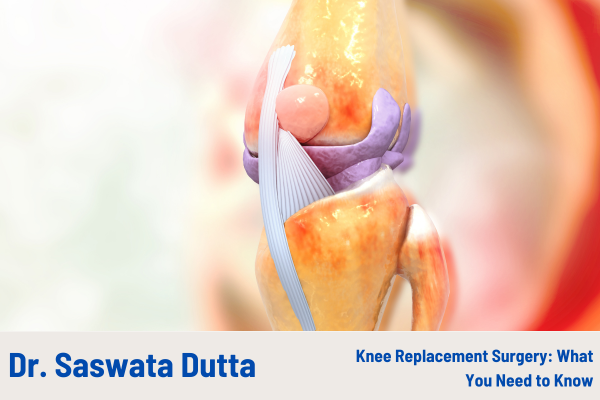Knee replacement surgery is a life-changing procedure aimed at relieving pain and restoring function for individuals suffering from severe knee joint damage. Dr. Saswata Datta, one of the best orthopedic and joint replacement surgeons in Bardhaman, West Bengal, offers a detailed overview of knee replacement surgery, including its indications, types, benefits, and what to expect during recovery.
What is Knee Replacement Surgery?
Knee replacement surgery involves the removal of damaged or worn-out parts of the knee joint and replacing them with artificial components. This surgery is typically recommended for patients experiencing significant pain, limited mobility, and reduced quality of life due to conditions such as osteoarthritis, rheumatoid arthritis, or traumatic injury.
Indications for Knee Replacement
Knee replacement surgery may be considered when:
- Severe Osteoarthritis: When arthritis has caused substantial cartilage loss, leading to chronic pain and restricted movement.
- Rheumatoid Arthritis: A condition that results in inflammation and damage to the knee joint.
- Post-Traumatic Arthritis: Arthritis that develops after a serious knee injury or fracture.
- Knee Deformities: Such as severe bowing or knock-knees that interfere with daily activities.
Types of Knee Replacement Surgery
- Total Knee Replacement (TKR): This is the most common type of knee replacement. It involves replacing the entire knee joint with an artificial implant. The damaged surfaces of the femur (thigh bone) and tibia (shin bone) are replaced, along with the kneecap (patella) if necessary.
- Partial Knee Replacement (PKR): Also known as unicompartmental knee replacement, this procedure involves replacing only the damaged part of the knee joint while preserving the healthy areas. It is typically used for patients with arthritis limited to one side of the knee.
- Knee Resurfacing: In this procedure, only the damaged surfaces of the knee joint are replaced with metal and plastic caps, preserving more of the natural bone than traditional knee replacement.
The Procedure
Knee replacement surgery is performed under general or regional anesthesia. The surgeon will make an incision to access the knee joint, remove the damaged cartilage and bone, and replace them with artificial components. The procedure generally lasts 1-2 hours, depending on the complexity and type of replacement.
Recovery and Rehabilitation
Recovery from knee replacement surgery involves several key stages:
- Immediate Postoperative Care: After surgery, patients will follow specific care instructions, including managing pain, keeping the knee elevated, and using assistive devices like crutches or walkers.
- Physical Therapy: A structured physical therapy program is crucial for regaining strength, flexibility, and function in the knee. Therapy usually begins shortly after surgery and continues for several months.
- Gradual Return to Activity: Patients are encouraged to gradually resume their daily activities and exercise routines as their knee heals. Full recovery and return to normal activities can take several months.
Benefits of Knee Replacement Surgery
- Pain Relief: One of the primary benefits is significant reduction in pain, allowing patients to engage in daily activities without discomfort.
- Improved Function: Knee replacement surgery can restore knee function, improving mobility and enhancing overall quality of life.
- Enhanced Mobility: Patients often experience improved range of motion and strength, leading to a more active and fulfilling lifestyle.
Conclusion
Knee replacement surgery offers significant relief and improved function for individuals suffering from severe knee joint issues. Dr. Saswata Datta, a leading orthopedic and joint replacement surgeon in Bardhaman, is committed to providing expert care and support throughout the surgical process. By understanding the procedure, preparing for recovery, and adhering to a comprehensive rehabilitation plan, patients can achieve notable improvements in pain and function, ultimately enhancing their quality of life.
